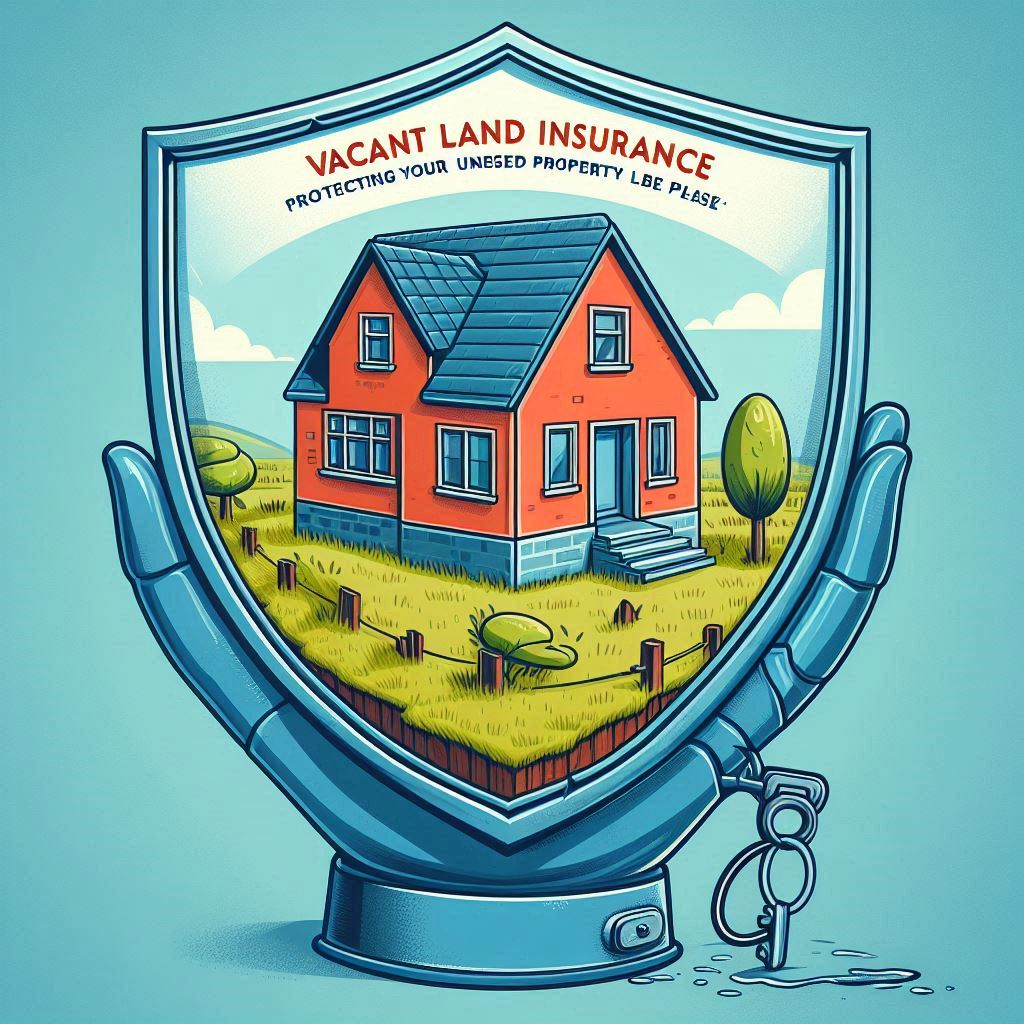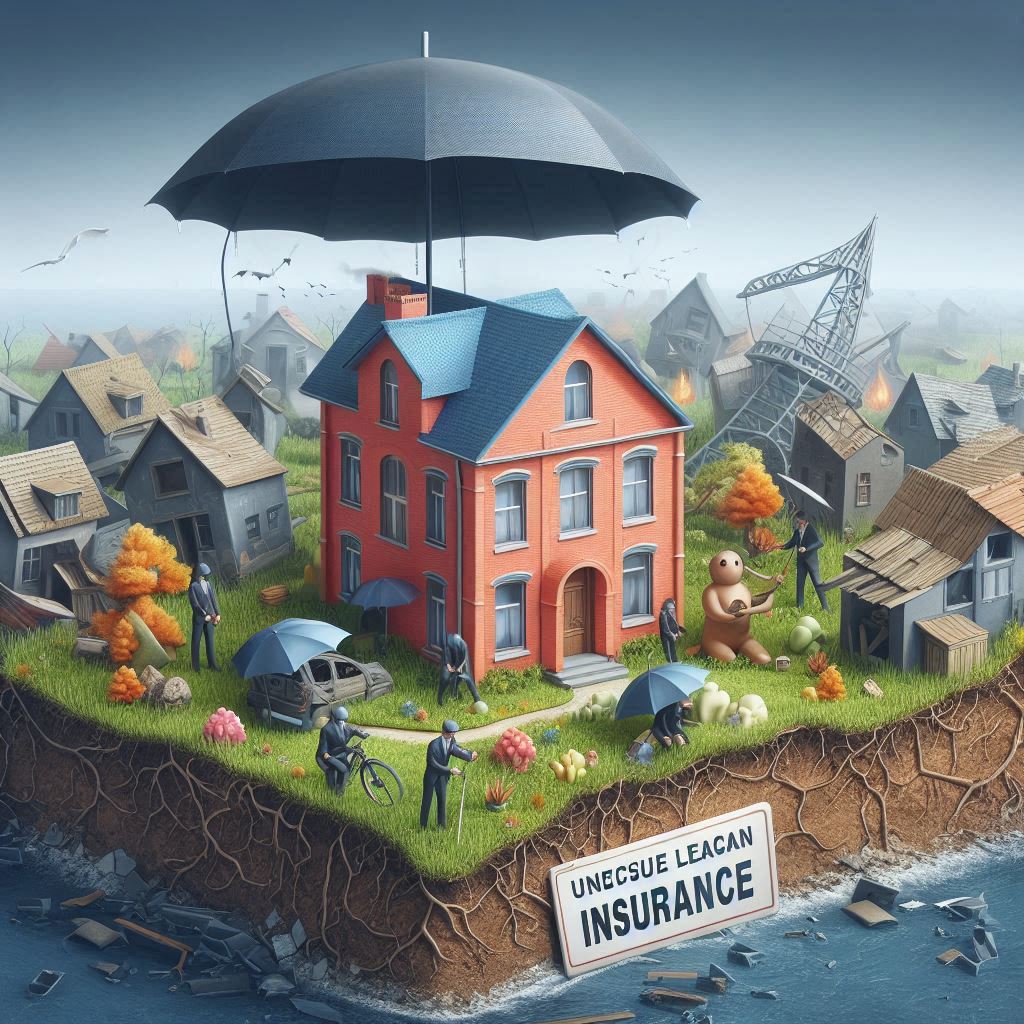Introduction



Vacant land, often referred to as undeveloped or unimproved land, is property without any structures or buildings on it. While it might seem like an idle asset, vacant land presents unique risks that require specialized insurance coverage. Land insurance, also known as vacant land ihttps://featurefilm.online/wp-admin/post.php?post=2880&action=editnsurance, is designed to safeguard landowners from financial losses due to unexpected events. This introduction will delve into the definition of vacant land, outline the potential risks associated with it, emphasize the importance of land insurance in mitigating these risks, and provide an overview of the types of coverage available to protect your valuable investment.
Definition of Vacant Land and Its Potential Risks
Table of Contents
Vacant land encompasses a wide range of properties, including empty lots, undeveloped fields, and unused acreage. Despite its seemingly passive nature, vacant land faces numerous potential hazards. These risks can include:
- Natural Disasters: Fires, floods, earthquakes, and other natural disasters can cause significant damage to vacant land, affecting its value and usability.
- Liability Claims: If someone gets injured on your vacant land, you could be held liable for their medical expenses and other damages.
- Vandalism and Theft: Vacant properties are often targets for vandalism, theft of materials, and illegal dumping.
- Legal Disputes: Disputes over property boundaries, access rights, and zoning regulations can arise, leading to costly legal battles.
Importance of Land Insurance in Mitigating These Risks
Land insurance acts as a financial safety net, protecting landowners from the financial burdens associated with the aforementioned risks. By securing appropriate coverage, you can ensure that your investment is protected from unexpected events that could otherwise lead to significant losses. Landhttps://isu-armac.com/do-i-need-property-insurance-for-vacant-land/ insurance can cover the costs of repairs, legal fees, medical expenses, and other damages, allowing you to recover and move forward.
Overview of the Types of Coverage Available
Land insurance policies typically offer a range of coverage options, including:
- Liability Coverage: Protects against claims for bodily injury or property damage that occur on your vacant land.
- Property Damage Coverage: Covers damage to your land caused by natural disasters, vandalism, or other perils.
- Legal Expense Coverage: Provides financial assistance for legal fees incurred due to disputes related to your land.
By tailoring your land insurance policy to your specific needs and the unique risks associated with your property, you can ensure comprehensive protection and peace of mind.
Risks Associated with Vacant Land
- Natural Disasters:
- Fire: Wildfires or even small fires can spread quickly and cause extensive damage to vegetation and the land itself.
- Floods: Heavy rainfall, overflowing rivers, or storm surges can inundate vacant land, leading to erosion, contamination, and loss of value.
- Earthquakes: Seismic activity can cause ground displacement, landslides, or fissures, making the land unstable or unusable.
- Storms: High winds, hail, or tornadoes can uproot trees, damage fences, and scatter debris across the property.
- Vandalism and Theft:
- Illegal Dumping: Vacant land often becomes a target for illegal dumping of waste, hazardous materials, or construction debris, leading to cleanup costs and environmental concerns.
- Trespassing: Unauthorized individuals may enter the property, potentially causing damage, starting fires, or engaging in other harmful activities.
- Damage to Property: Vandals may deface the land, destroy fences, or steal any materials or equipment stored on the property.
- Liability Issues:
- Injuries to Trespassers: If someone gets injured on your vacant land, even if they are trespassing, you could be held liable for their medical expenses and other damages.
- Environmental Contamination: If hazardous substances are dumped or leak onto your property, you could be responsible for the cleanup costs and any resulting environmental damage.
- Other Risks:
- Legal Disputes: Disputes over property boundaries, access rights, or zoning regulations can arise, leading to costly legal battles.
- Unexpected Costs: Unexpected expenses can occur due to unforeseen events, such as the need for environmental assessments, surveying, or legal consultations.
Land Insurance as a Solution

Land insurance provides a financial safety net to protect landowners from the financial burdens associated with these risks. By securing appropriate coverage, you can mitigate the potential losses and ensure the long-term value of your vacant land investment.
Key Coverage Options
- Liability Coverage: Protects against claims for bodily injury or property damage that occur on your vacant land.
- Property Damage Coverage: Covers damage to your land caused by natural disasters, vandalism, or other perils.
- Legal Expense Coverage: Provides financial assistance for legal fees incurred due to disputes related to your land.
Types of Vacant Land Insurance Coverage
- Liability Insurance:
- This coverage is crucial for vacant landowners as it protects against legal claims and financial liabilities arising from injuries or property damage that occur on the land.
- It covers medical expenses, legal fees, and potential settlement costs if someone gets injured while on your property, even if they are trespassing.
- It also covers damages to a third party’s property if caused by something on your land, such as a falling tree.
- Property Damage Insurance:
- While typically associated with structures, property damage insurance can also be relevant for vacant land.
- If there are any structures on the land, such as fences, signs, or sheds, this coverage would pay for repairs or replacement in case of damage caused by fire, vandalism, or natural disasters.
- In some cases, it might also cover damage to the land itself, like erosion or sinkholes, depending on the policy.
- Environmental Liability Insurance:
- This specialized coverage is essential for landowners who have concerns about potential pollution or contamination on their property.
- It protects against claims and cleanup costs arising from pollution originating from the land, such as leaking underground storage tanks, illegal dumping, or hazardous waste spills.
- It can also cover legal fees and defense costs associated with environmental lawsuits.
- Legal Defense Insurance:
- Landownership can sometimes lead to legal disputes, such as boundary disputes, zoning issues, or easement conflicts.
- Legal defense insurance covers the legal fees and expenses incurred in defending your rights and interests related to the land.
- It can be a valuable addition to your land insurance policy, providing financial protection and peace of mind in the face of legal challenges.
Choosing the Right Coverage
The specific risks associated with your vacant land will determine the types of coverage you need. Factors to consider include the location of the property, its intended use, and any potential environmental concerns. Consulting with an insurance professional can help you assess your risks and tailor a land insurance policy that provides comprehensive protection for your valuable asset.
Factors Affecting Vacant Land Insurance Premiums
- Location of the Land: High-risk areas (e.g., prone to floods) might have higher premiums
- Size of the Land: Larger properties might have higher premiums
- Intended Use of the Land: Land intended for development might have different rates
- Presence of Structures: Land with structures (even unused) might need additional coverage
- Security Measures: Fences, surveillance systems, etc. might lower premiums
Factors Affecting Vacant Land Insurance Premiums

- Location of the Land:
- High-Risk Areas: Land located in areas prone to natural disasters, such as floods, wildfires, earthquakes, or hurricanes, will typically have higher premiums. Insurers assess the historical data and potential risks of the area to determine the likelihood of claims.
- Crime Rates: Properties situated in areas with high crime rates might also face higher premiums due to the increased risk of vandalism, theft, or illegal dumping.
- Size of the Land:
- Larger Properties: Larger parcels of land generally require more extensive coverage and therefore may have higher premiums. The greater the land area, the higher the potential exposure to risks and the increased cost of potential claims.
- Intended Use of the Land:
- Development Plans: If you have plans to develop the land in the future, the type of development (residential, commercial, industrial) and the timeline can affect the premiums. Land intended for immediate development might have different rates compared to land held for long-term investment.
- Presence of Structures:
- Additional Coverage: Even if structures on the land are unused, they still pose a risk of damage or liability. Land with structures, such as sheds, fences, or old buildings, might require additional coverage, leading to higher premiums.
- Security Measures:
- Risk Mitigation: Implementing security measures can help mitigate risks and potentially lower your premiums. Fences, security cameras, alarm systems, and regular patrols can deter vandalism and trespassing, demonstrating to insurers that you are taking proactive steps to protect your property.
- Other Factors:
- Claims History: Your past claims history with any insurance provider can also influence premiums. If you have a history of frequent claims, you might face higher rates.
- Deductibles: Choosing a higher deductible can lower your monthly premiums but will require you to pay more out of pocket in case of a claim.
- Assessing Your Needs:
- Identify Risks: Begin by evaluating the specific risks associated with your vacant land. Consider its location, potential for natural disasters, susceptibility to vandalism, and any environmental concerns.
- Coverage Needs: Based on the identified risks, determine the types of coverage that are most important for your land. This may include liability coverage, property damage coverage, environmental liability coverage, and legal defense coverage.
- Comparing Quotes:
- Multiple Insurers: Obtain quotes from several reputable insurance providers. This allows you to compare coverage options, premiums, and discounts.
- Online Comparison Tools: Utilize online comparison tools to streamline the process and easily compare quotes from different insurers.
- Reading the Fine Print:
- Policy Terms: Carefully review the terms and conditions of each policy before making a decision. Pay close attention to the coverage limits, deductibles, exclusions, and claim procedures.
- Exclusions: Understand what is not covered by the policy. Some policies may exclude certain types of damage or liability claims.
- Consulting an Insurance Agent:
- Professional Advice: Seek guidance from an experienced insurance agent specializing in land insurance. They can help you assess your risks, explain the coverage options, and answer any questions you may have.
- Customized Solutions: An insurance agent can tailor a policy that specifically addresses the unique needs of your vacant land.
Tips for Vacant Land Owners
Tips for Vacant Land Owners: Protecting Your Investment and Future
Owning vacant land can be a smart investment or a blank canvas for future dreams. Here’s how to make the most of it:
- Regularly Inspect Your Property:
- Prevent Trespassing & Vandalism: Visit your land often to deter unwanted activities and catch any issues early.
- Identify Hazards: Look for signs of erosion, illegal dumping, or hazardous materials.
- Secure the Perimeter:
- Fencing & Signage: Clearly mark your boundaries and post “No Trespassing” signs.
- Maintain Access: Ensure gates and locks are functional but secure.
- Know Your Zoning Regulations:
- Permitted Uses: Understand what’s allowed (residential, commercial, etc.) to plan for the future.
- Building Restrictions: Be aware of setbacks, height limits, or other requirements that may impact development.
- Environmental Considerations:
- Protect Sensitive Areas: If your land has wetlands, natural habitats, or protected species, take steps to preserve them.
- Manage Vegetation: Control invasive species and reduce fire risk.
- Plan for the Future:
- Utilities & Access: Consider how you’ll bring in water, electricity, and access roads if you plan to develop.
- Permits & Approvals: Research any necessary permits well in advance.
The Importance of Land Insurance
Land insurance is a crucial safeguard for vacant land owners. Here’s why:
- Liability Protection: If someone gets injured on your property (even a trespasser), you could be held liable. Land insurance helps cover legal costs and damages.
- Natural Disaster Coverage: Fire, floods, or other natural disasters can cause significant damage to your land. Insurance can help with cleanup and restoration.
- Theft & Vandalism: If equipment, fences, or other structures on your property are stolen or damaged, insurance can help with replacement costs.
Choosing the Right Land Insurance
- Basic vs. Comprehensive: Basic policies cover the essentials, while comprehensive plans offer more extensive protection.
- Named Perils vs. All-Risk: Named perils policies cover specific events (like fire or theft), while all-risk policies cover a broader range of risks, except for those explicitly excluded.
- Deductibles & Limits: Understand how much you’ll pay out of pocket (deductible) and the maximum coverage amount (limit) for each type of claim.
Talk to an Insurance Agent An insurance agent can help you assess your risks and find the right policy for your specific needs and budget.
Land Insurance and Proactive Management

By taking proactive measures to protect your vacant land, you are not only minimizing risks but also demonstrating to your insurance provider that you are a responsible landowner. This can potentially lead to lower insurance premiums or discounts on your land insurance policy.
Key Takeaway:
Land insurance provides financial protection for your vacant land, but proactive management is essential to prevent problems, reduce risks, and potentially lower your insurance costs.
Conclusion
In conclusion, land insurance plays a crucial role in safeguarding your vacant land investment. While often overlooked, it is an essential tool for protecting yourself from financial losses due to unexpected events that could impact your property. By understanding the risks associated with vacant land and exploring the various coverage options available, you can make an informed decision and select a policy that aligns with your specific needs and budget.
Land insurance provides peace of mind, knowing that you are financially protected in the face of natural disasters, liability claims, vandalism, and other unforeseen events. It acts as a safety net, allowing you to recover and move forward without facing significant financial burdens.
Remember, choosing the right land insurance policy requires thorough research and understanding of the terms and conditions. Consulting with an insurance professional can help you navigate the complexities and tailor a policy that addresses your unique risks and concerns.
Investing in land insurance is not just about protecting your property; it’s about safeguarding your financial future and ensuring the long-term value of your investment. By taking proactive measures to protect your vacant land, you can rest assured that your asset is secure and ready for whatever the future may hold.pen_sparktunesharemore_vert




